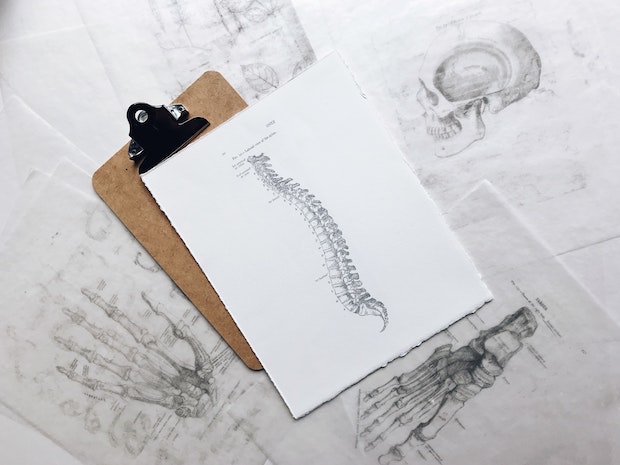Table of Contents
III. Mixed Connective Tissue Disease
Autoimmune disorders produce antibodies that mistakenly attack the body's tissues. Several conditions target connective tissues and affect the joints, tendons, ligaments, and blood vessels. These structures are integral to the body's functioning, and if the immune system attacks them, then painful symptoms can occur. Disorders like rheumatoid arthritis, spondyloarthritis, and mixed connective tissue disease are three examples of autoimmune connective tissue illnesses.
The majority of these conditions cause pain in the joints and surrounding tissues. These disorders have their specific treatment plan, but doctors typically prescribe Plaquenil (hydroxychloroquine) or Celebrex to help with pain and inflammation. Read on to learn more about symptoms and treatments for autoimmune connective tissue disorders. [1]
Rheumatoid Arthritis
Rheumatoid arthritis (RA) differs from the average wear and tear arthritis that affects older people. RA is caused by a malfunctioning immune response, causing antibodies to attack joints and organs like the lungs and heart. Rheumatoid arthritis attacks the synovial tissues in the joints. Synovial tissues are the loose vascular connective tissue that surrounds joints and sheaths protecting tendons. These tissues cover bony prominences, like the elbows and knees.
Over time, the inflammation of joint tissues can cause the destruction of the cartilage and bone within the joint. Tendons and ligaments that hold the joint together eventually become loose and cause the joint to lose its shape and alignment. [2]
Over 1.3 million people in the United States have rheumatoid arthritis. Women are more likely to experience this condition than men. Researchers think this is due to different hormones in male and female bodies. RA typically occurs between the ages of 30 and 60 for women and later in life for men. Although it is more common in women, RA can occur in anyone, even small children. [3]
RA's symptoms may not be incredibly noticeable at first, but it will worsen as time goes on. At first, RA can make the small joints of the fingers and toes feel stiff and swollen. If a flare-up occurs, these symptoms can last for several days or weeks. As rheumatoid arthritis progresses, larger joints like the hips, shoulders, and knees may be affected. Joint damage can occur three to six months after RA symptoms begin. Common symptoms include: Several other symptoms may begin to affect other parts of the body, including: Spondyloarthritis describes several inflammatory diseases that affect the neck, back, pelvis, and larger joints. Unlike other types of arthritis, spondyloarthritis involves ligaments and tendons that attach to bones. These sites are called entheses and can cause stiffness and inflammation in the back. Back pain is typically the first sign of this condition. The other type of spondyloarthritis can also affect the hands, feet, arms, or legs. This bone destruction can cause deformities of the spine and affect the shoulders and hips. Over time, the cartilage between the vertebrae may degrade and cause the bones to rub against each other. Painful backaches may occur after long periods of inactivity. This condition is typically genetic and affects mostly males in their teens and twenties. HLA-B27 is the major gene associated with the development of this condition. If this bone condition is left untreated, it can cause the spine to fuse, making it less flexible. Bone fusion can result in a hunched-forward posture. [4] Symptoms of spondyloarthritis can vary from mild to severe. There is no cure for spondyloarthritis, but medications can help slow the progression of bone degeneration. Symptoms of spondyloarthritis may include: Mixed connective tissue disease (MCTD) encompasses several disorders with similar symptoms, most typically inflammation of joints and muscle pain. MCTD may include symptoms of Sjogren's syndrome, scleroderma, and polymyositis. Immune system disorders often affect several parts of the body, so MCTD is an overlapping disease. Sjogren's syndrome: Sjogren's syndrome attacks the glands of the body that make tears and saliva. This condition causes dry mouth and dry eyes. Sjogren's can be classified as a glandular autoimmune condition but can lead to other autoimmune conditions, affecting the connective tissue. [6] Scleroderma: Scleroderma most commonly causes hardening of the skin. Along with skin hardening, the connective tissues may also harden, leading to severe disability. For some, scleroderma only impacts the skin, but it can impact blood vessels, the digestive system, and other internal organs. [7] Polymyositis: Polymyositis is an uncommon condition that leads to muscle weakness in the body. This can cause weakness in both sides of the body, making it difficult to climb stairs or lift objects. The muscles in the hips, shoulders, or thighs are most commonly affected by this condition. [8] If you suffer from one of the above conditions, you are at a much greater risk of suffering from MCTD. This disease is typically genetic and is more common in those with a family history of the condition. If this disease is left untreated, it can lead to tissue death, hearing loss, nerve damage, heart disease, high blood pressure, and digestive tract damage. Common symptoms of MCTD can include: Many autoimmune connective tissue disorders do not have a cure. The goal of treatment for these diseases is to prevent tissue loss and reduce pain and inflammation. Over-the-counter NSAIDs (nonsteroidal anti-inflammatory drugs) can help with mild pain and inflammation in the beginning stages of autoimmune disorders. Once the disease progresses, you may be prescribed prescription-strength NSAIDs like Celebrex. Corticosteroid medications are frequently used in the treatment of rheumatoid arthritis. Steroid medications like prednisone can be injected directly into the arthritic joint to relieve pain. Disease-modifying antirheumatic drugs (DMARDs) can also help suppress the immune system. DMARDs like Plaquenil (hydroxychloroquine) or Rheumatrex (methotrexate) suppress the immune system from making antibodies that attack the joints. When suppressed, pain and swelling are reduced, and long-term damage to the joints is prevented. [10] The content in this article is intended for informational purposes only. This website does not provide medical advice. In all circumstances, you should always seek the advice of your physician and/or other qualified health professionals(s) for drug, medical condition, or treatment advice. The content provided on this website is not a substitute for professional medical advice, diagnosis, or treatment.
a. Symptoms
Spondyloarthritis

a. Symptoms
Mixed Connective Tissue Disease

a. Symptoms
Treatments
